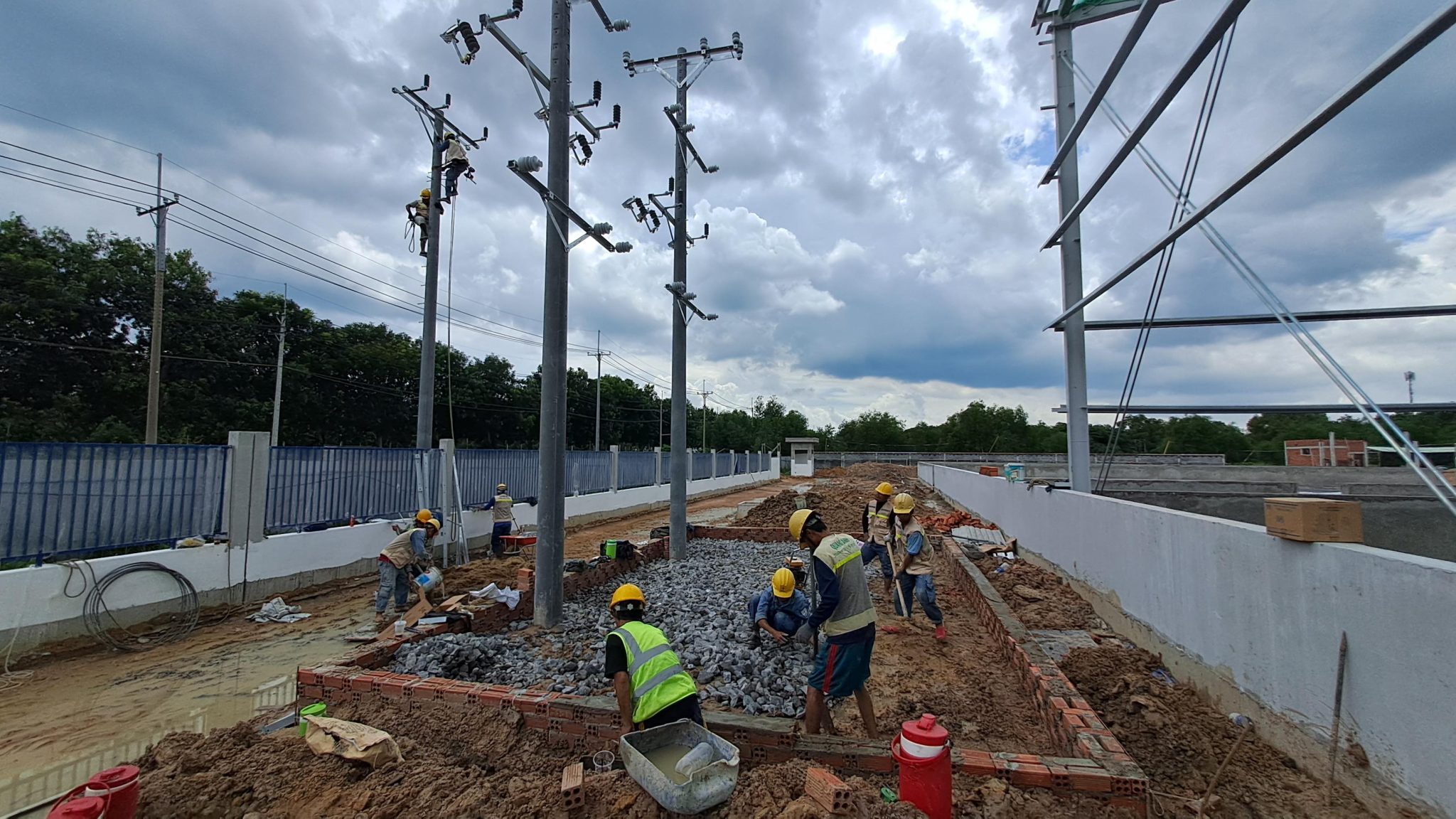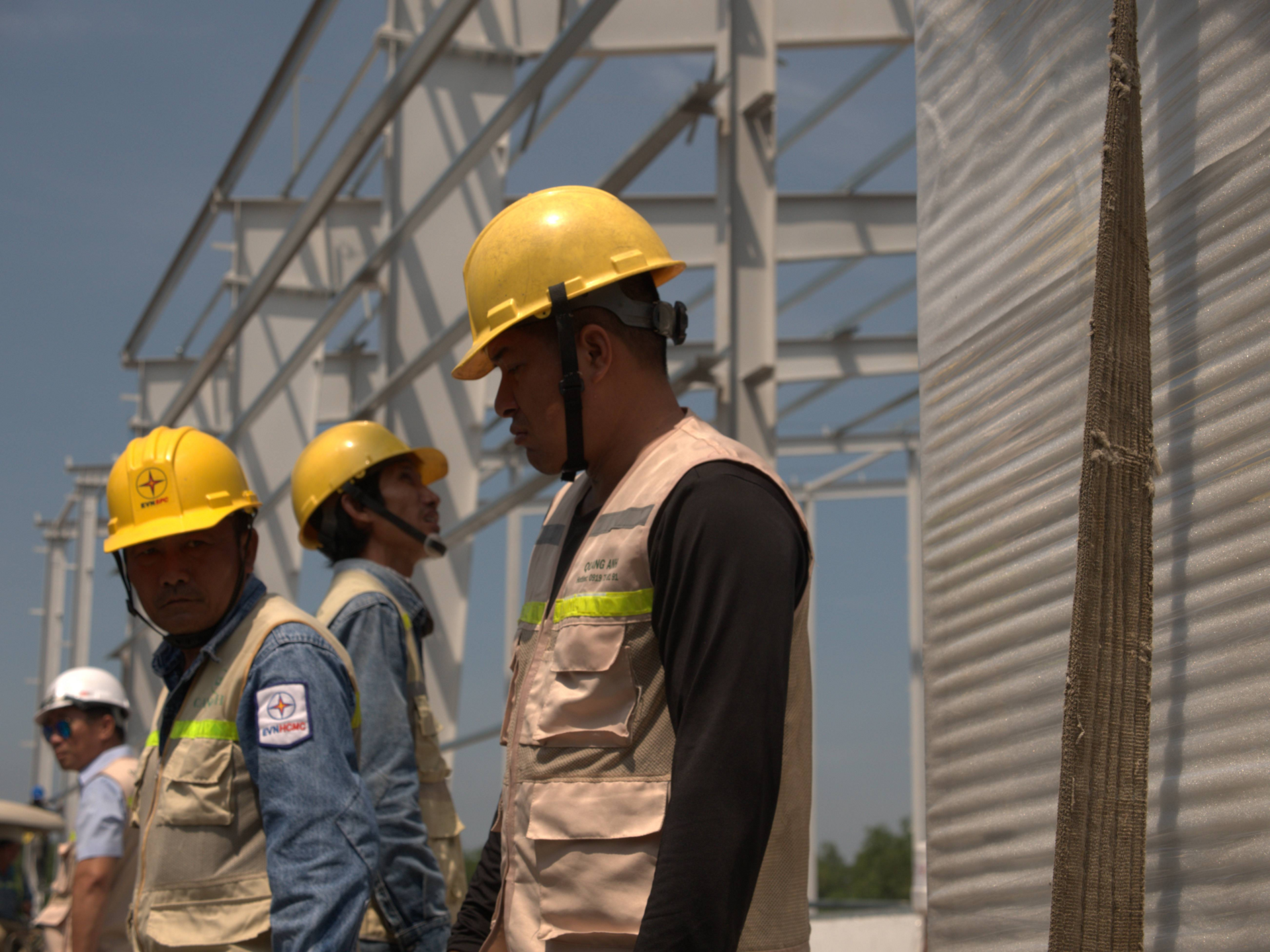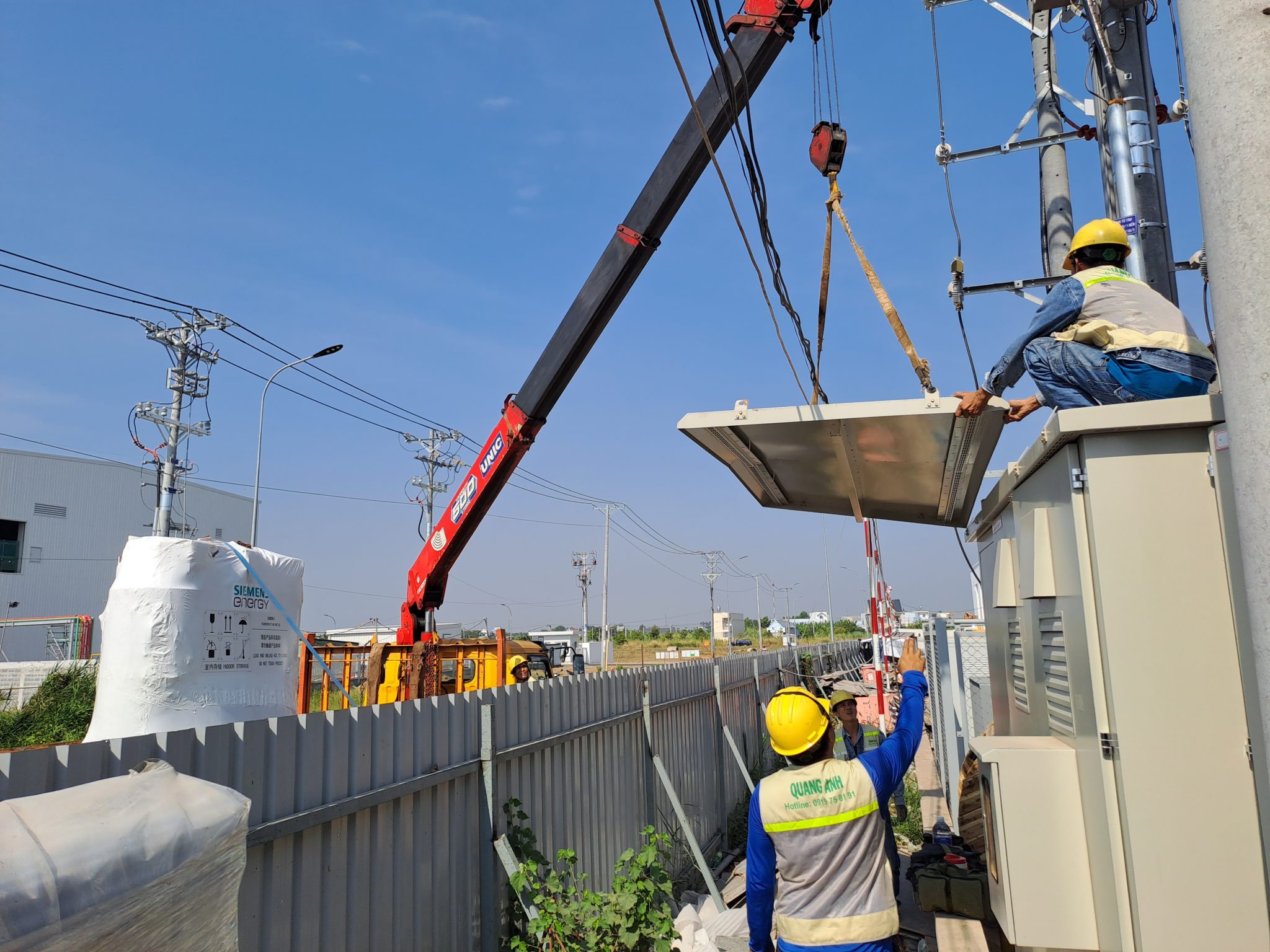In 2025, solar energy costs in Vietnam are clearly outlined by the Ministry of Industry and Trade’s policy decisions. Factors like regional pricing frameworks and plant types, along with the policy shift from a FIT mechanism to competitive bidding, play crucial roles in guiding these costs amid the dynamic energy market.
2025 Solar Pricing Framework
The 2025 solar pricing framework under Decision 988/QD-BCT of the Ministry of Industry and Trade is categorized by plant type and geographic region. Prices exclude VAT and reflect variance in solar potential and operational costs across regions. Higher prices incentivize solar developments with storage systems to optimize resource use effectively.
Decision 988/QD-BCT, issued by the Ministry on April 16, 2025, introduces a new solar generation pricing framework in Vietnam. This change affects both traditional and floating solar systems, including those with and without storage solutions.
To gain deeper insight, we must consider each aspect of solar pricing carefully.
-
Non-Storage Ground Solar:
-
Northern Region: 1,382.7 VND/kWh
-
Central Region: 1,107.1 VND/kWh
-
Southern Region: 1,012.0 VND/kWh
-
Non-Storage Floating Solar:
-
Northern Region: 1,685.8 VND/kWh
-
Central Region: 1,336.1 VND/kWh
-
Southern Region: 1,228.2 VND/kWh
Differential pricing across regions highlights the variations in renewable energy potential and operational costs, notably in floating solar in the North, which involves more geographical and solar radiation challenges.
Storage Systems
Another critical aspect of the 2025 pricing framework is the encouragement of storage system integration. This not only enhances power stability but also optimizes economic efficiency. Specific requirements for storage systems include:
- Capacity: At least 10% of the solar plant’s capacity.
- Storage/Discharge Time: Minimum of 2 hours.
- Electricity Charge Ratio: 5% of the plant’s total output.
With this push, storage systems from renowned brands like Schneider and ABB may become indispensable in new solar projects, enhancing effective power balancing.
In summary, the 2025 solar pricing framework represents a significant step forward in managing and developing sustainable renewable energy resources, motivating investors to integrate storage technologies for optimized profitability and power stability.

Policy Trends and Impact on Solar Costs 2025
2025 marks a pivotal shift as Vietnam transitions from FIT pricing to competitive bidding for solar projects. This evolution not only fosters transparency among contractors but also optimizes investment and operational costs. Notably, tax incentives and transmission fee reductions continue driving high-efficiency projects with markedly reduced investment costs.
Key governmental decrees brought foundational shifts in 2025 solar energy policy impacts, particularly with Decree 58/2025/ND-CP strongly supporting rooftop solar, enabling surplus electricity sales back to the grid, along with financial and land incentives.
Legal Framework and Support Policies
- Decree 56/2025/ND-CP details energy market planning, enhancing transparency and efficiency via **Energy market regulations**.
- Electricity Plan VIII with Decision 500/QD-TTg promotes refined management of solar investments, focusing on improving legal aspects pertinent to investment processes.
Surplus Electricity and Production Regulations
With new **solar energy regulations**, households and businesses owning systems below 100 kW may sell up to 20% surplus electricity, promoting efficient energy exploitation and commercialization.
Solar Pricing with Storage Incentives
According to the Ministry of Industry and Trade, the 2025 solar pricing with storage can reach up to 1,875 VND/kWh, higher than traditional solar. This unveils new **Sustainable energy incentives** with the stability and versatility of renewable sources.
Impact on Solar Costs
- Financial incentives and land cost reductions significantly reduce initial investment costs.
- **Renewable energy policies** allow surplus sales, boosting revenue and cutting production costs, encouraging storage investment.
- Clarified energy development and investment processes save unnecessary costs, enhancing solar investment effectiveness.
Sustainable Development Directions
This policy prioritizes integrating solar within carbon emission reduction and Net Zero goals, aligning with global trends and placing Vietnam on the clean energy map.

Investment Costs for Solar System Installation
The investment for solar system installation remains stable, estimated at 13-15 million VND for a 100 kWp system. Costs may fluctuate based on panel type, storage features, and varied regional technical demands. Pricing policy and tax incentives relieve financial pressure, encouraging more rooftop solar installations, offering economic and environmental benefits.
Considering solar energy investment, solar rooftop systems are gradually becoming an optimal choice for homes and businesses in Vietnam. Here are the investment details based on typical capacities.
-
**Cost by Capacity for Rooftop Solar Systems**
– **3 kWp**: Price about 35 – 58 million VND, with 7 to 9 panels, generating around 360 kWh monthly.
– **5 kWp**: Price range 50 – 85 million VND with 12 panels, producing 600 kWh monthly.
– **10 kWp**: Costs between 95 – 150 million VND with 23 panels, generating about 1,200 kWh.
– **15 kWp**: Cost approximately 135 – 145 million VND with 34 panels, a capacity of 1,800 kWh monthly.
– **20 kWp**: Ranges from 160 – 240 million VND, suitable for larger farms or businesses.
Sales prices include equipment, installation, and rack systems, excluding VAT and maintenance fees. -
**Cost per kWp**
– Solar costs average from 10-20 million VND/kWp, depending on system type (grid-tied or storage) and equipment quality. -
**Components of Cost Structure**
A solar system typically includes:- Solar panels: Major cost, with mono, poly, and multi-crystalline types.
- Inverter: Converts DC to AC electricity.
- Support structures: Fix panels on roofs or ground.
- Electrical cabinet and cables: Protection and connectivity systems.
- Construction, transportation, installation costs.
-
**Maintenance and Operation Costs**
– Solar systems incur low maintenance costs, estimated at about 1 million VND annually for regular cleaning and inspection. -
**Factors Influencing Costs**
Factors affecting solar costs include:- Component quality and brand: Brands like Mitsubishi, ABB, or Schneider may be costlier.
- Installation location: Terrain and infrastructure affect construction costs.
- System type: Storage systems cost more than grid-tied systems.
- System scale: Larger capacities lower per kWp cost due to scale economies.
-
**Efficiency and Energy Yield**
– A 1 kWp system can generate 4-5 kWh/day, enough for basic needs of a small household.
Investment costs for solar systems range from 35 million to 240 million VND for systems from 3 kWp to 20 kWp, influenced by factors like capacity, equipment quality, and system type. This is an optimal solution for effective renewable energy usage in Vietnam.

New solar energy cost regulations for 2025 provide a clear price framework and encourage storage technology development, while tax incentives maximize investment benefits. Policy changes are poised to enhance project efficiency and provide sustainable returns for businesses and consumers.
Contact QuangAnhcons for detailed solar investment consultations at the hotline: +84 9 1975 8191.
QuangAnhcons specializes in installations, consulting, and implementing solar projects under the latest regulations, helping clients maximize government incentives.
[contact-form-7 id="7239967" title="Contact form 1"]


Related Posts
Tay Ninh Solar Power Planning: Technical Framework, Grid Interconnection, and Rollout Roadmap
Technical overview of solar planning in Tay Ninh: irradiation, grid capacity, permitting, design, operations, and [...]
Dec
Binh Duong Solar Planning: Regulatory Framework, Grid Interconnection, and an Implementation Roadmap for Factories and Industrial Parks
An overview of Binh Duong solar planning: legal framework, interconnection, design, risk management, and an [...]
Dec
Solar Farm Repair: O&M Workflow, IV Curve Diagnostics, Thermography, Inverter Service and Utility-Scale Safety
A utility-scale solar farm repair plan centered on O&M, IV curves, thermal imaging, inverter service, [...]
Dec
Dong Nai Solar Power Plan 2023–2025: Tri An 1,029 MW, Grid Upgrades and the DPPA Pathway
A complete look at Dong Nai’s solar power plan: Tri An 1,029 MW, irradiation potential, [...]
Nov
Quang Ngai Solar Power Plan 2024–2030: Legal Framework, Irradiance Potential, and Development Roadmap
A complete look at Quang Ngai’s solar power plan: capacity targets, irradiance (PVout), development zones, [...]
Nov
Solar Damage Assessment Services: On-Site Procedures, EL/IV/Thermography Testing & Compliance with Standards
Discover IEC/UL/NEC standard solar damage assessment processes: on-site evaluation, EL and IV curve testing, thermal [...]
Nov
Comprehensive Package Estimate for a 1800MVA 500kV Substation: Scope, Configuration 3x600MVA, Standards and Timeline Management
An overview of the 1800MVA 500kV substation estimate: construction scope, configuration 3x600MVA, GIS/AIS, SCADA, standards, [...]
Nov
Factory Electrical Systems: Comprehensive Design and Implementation Guide
Discover the detailed and safe process of factory electrical systems design and implementation. [...]
Oct
Blueprints Required for Factory Construction Permits
Discover the necessary blueprints in factory construction permit applications, from floor plans to electrical and [...]
Oct
What Are the Requirements for a Factory Construction Permit? A Comprehensive Guide
Explore the documentation and steps needed to secure a factory construction permit for streamlined project [...]
Oct
Factory Construction Permit Procedures in Vietnam: Essential Guidelines and Documents
Learn the procedures for securing a factory construction permit in Vietnam, focusing on document preparation [...]
Oct
Key Steps in the Factory Construction Process
Discover the essential steps and requirements for building factories. [...]
Oct
Comprehensive Electrical Substation Solutions by Quanganhcons
Discover the cutting-edge electrical substation solutions offered by Quanganhcons for industrial applications. [...]
Oct
Investment Costs for a 1MWp Solar Power System and Influencing Factors
Explore the investment costs for a 1MWp solar power system in Vietnam and the influencing [...]
Sep
QuangAnhcons: Elevating Wind Energy Solutions
Explore QuangAnhcons' leadership in wind energy and renewable solutions in Vietnam. [...]
Sep
Electrical Contractor Strategies at Becamex Industrial Park
Discover the strategic advancements and partnerships of the electrical contractor at Becamex Industrial Park. [...]
Sep
Investment Insights for 1MW Wind Energy in Vietnam: Costs and Opportunities
Discover the detailed analysis of costs and opportunities for investing in 1MW wind energy projects [...]
Sep
Advanced Electrical Installation Solutions by QuangAnhcons
Explore advanced electrical installation solutions and modern technology with QuangAnhcons. [...]
Sep
Enhancing Industrial Electrical Services with Quanganhcons
Discover Quanganhcons' expertise in industrial electrical services, offering efficient and sustainable power systems. [...]
Sep
Comprehensive MEP Solutions by QuangAnhcons: From Design to Maintenance Excellence
Discover optimal MEP solutions with QuangAnhcons, dedicated to excellence from design through maintenance. [...]
Sep